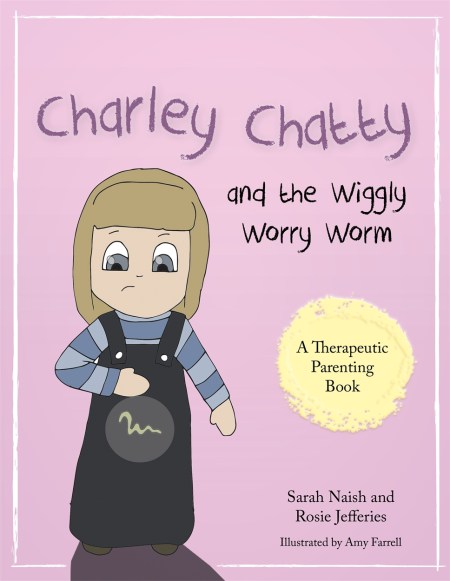Charley Chatty and the Wiggly Worry Worm
On sale
21st October 2016
Price: £12.99
Charley Chatty likes to talk. Charley talks so much that her mouth gets dry but there’s just so much to say!
“Why is the pavement brown?”
“I have got two shoes. Everyone has two shoes.”
“I can hear the radio. Who is on the radio? Why is there a button on the radio?”
Sometimes, Charley’s imagination takes over and she tells stories about things that didn’t really happen. She doesn’t mean to but she likes how it makes her feel important and the wiggly worry worm inside her belly goes away.
Written by a mum who understands, and her daughter (who also liked to tell tales), this is a story for children functioning at age 3-10.
“Why is the pavement brown?”
“I have got two shoes. Everyone has two shoes.”
“I can hear the radio. Who is on the radio? Why is there a button on the radio?”
Sometimes, Charley’s imagination takes over and she tells stories about things that didn’t really happen. She doesn’t mean to but she likes how it makes her feel important and the wiggly worry worm inside her belly goes away.
Written by a mum who understands, and her daughter (who also liked to tell tales), this is a story for children functioning at age 3-10.
Newsletter Signup
By clicking ‘Sign Up,’ I acknowledge that I have read and agree to Hachette Book Group’s Privacy Policy and Terms of Use
Reviews
[These therapeutic parenting books] are the most valuable books on my book shelf. In my 11 years of fostering I have read many books, but these are different. They are people friendly but real - they are written by someone that has been through looking after traumatised children and who better to offer help, theories and guidance. Sarah has written her books simply which means the traumatised children respond to the characters and can express themselves through the books. I will be offering my copies to everyone that comes into my home to read...well done Sarah Naish and all involved...
Excellent books! I have recommended them to every foster carer/adopter/professional I know! Our kids love them, and enjoy the fact that Sarah and Rosie 'get it'. 5 out of 5 stars.
This set of books all deal with common emotional and behavioural difficulties of adopted and fostered children. Difficulties are introduced through characters who behave in ways that children can identify with. The text is simple, humorous and with illustrations that grab the reader's attention. The books could be used in many ways but I would see them as a springboard for adults (adoptive parents, social workers or carers) to begin to talk to children about feelings and behaviours. Read aloud, the stories may enable children to recognise that they are not alone and that other children also struggle. It is often difficult for parents or carers to know where to start in talking about these issues. This set of books provides a way of doing this without blaming the child. These books should be available in every adoption agency for use by social workers or to be lent to parents.

